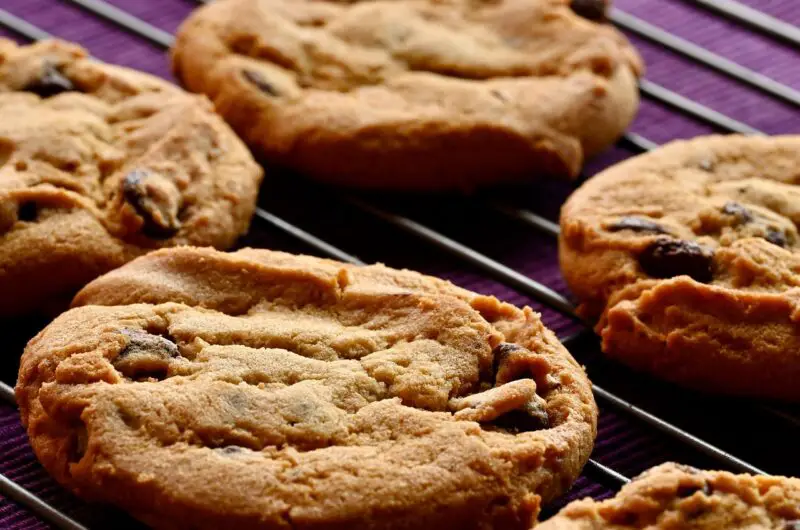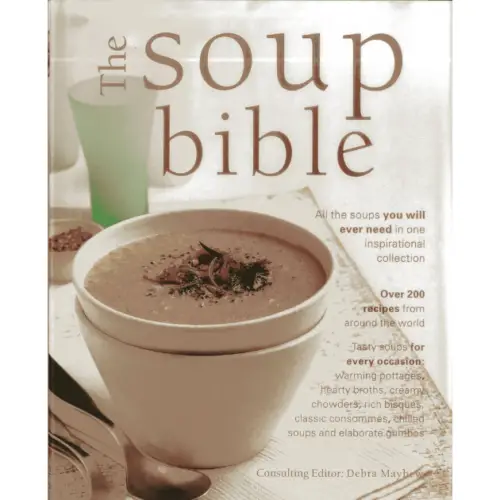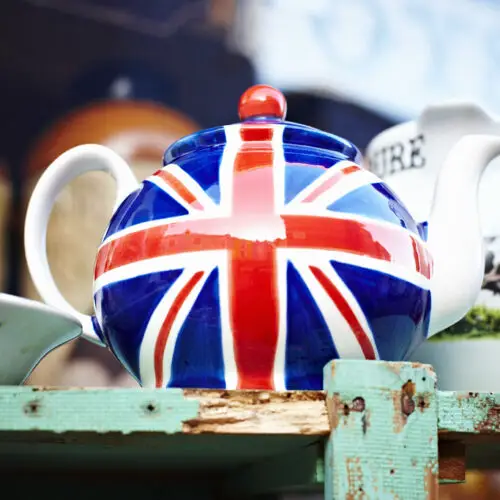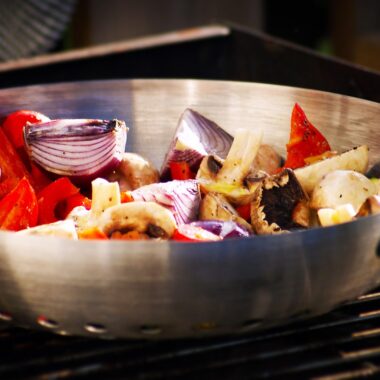In the pantheon of American desserts, few treats hold the iconic status of the chocolate chip cookie. Invented accidentally in the 1930s by Ruth Wakefield at the Toll House Inn, this simple combination of butter, sugar, flour, eggs, and chocolate morsels has evolved into countless variations. Yet, among the myriad recipes that have graced kitchen counters and celebrity cookbooks alike, Martha Stewart’s version stands out as a benchmark of perfection.
Published in her 1999 cookbook Martha Stewart’s Cookies and refined over decades of testing in her impeccably organized test kitchens, Stewart’s chocolate chip cookie recipe elevates the humble cookie to an art form. It’s crisp at the edges, chewy in the center, with a balanced sweetness and a generous studding of high-quality chocolate. This guide delves into the recipe’s origins, ingredients, step-by-step preparation, variations, troubleshooting tips, cultural impact, and why it remains a staple for home bakers in 2025 and beyond.
The Origins of Martha Stewart’s Iconic Recipe
Martha Stewart, the domestic goddess who built an empire on meticulous craftsmanship and aspirational living, didn’t invent the chocolate chip cookie, but she perfected it. Her journey with the recipe began in the early days of her catering business in the 1970s, where she experimented with classic American recipes to feed high-profile clients.
By the time she launched Martha Stewart Living magazine in 1990, cookies were a recurring feature—symbols of homemade comfort in a fast-paced world.
The specific recipe we’re dissecting today appeared in her dedicated cookie cookbook, co-authored with the editors of Martha Stewart Living. Titled “Classic Chocolate Chip Cookies,” it yields about 3 dozen cookies and calls for basic pantry staples with a few thoughtful twists. Stewart’s philosophy, as articulated in interviews, emphasizes quality over quantity: use the best butter, real vanilla extract, and premium chocolate. This isn’t a slapdash bake; it’s a deliberate process that rewards patience.
What sets Stewart’s recipe apart from the Nestlé Toll House original? Subtle ratios. She uses more brown sugar than white for deeper caramel notes, a touch more flour for structure, and recommends chilling the dough—a step often skipped in hurried versions but crucial for flavor development and texture. In a 2018 Martha Stewart Living article, she explained, “Chilling allows the fats to solidify and the flavors to meld, resulting in a cookie that’s tender yet sturdy.”
This insight, born from rigorous testing, has influenced countless bakers, including professional pastry chefs.
Ingredients: The Building Blocks of Perfection
To bake Stewart’s chocolate chip cookies, gather these precise ingredients (scaled for one batch):
- 2 1/4 cups all-purpose flour
- 1/2 teaspoon baking soda
- 1 cup (2 sticks) unsalted butter, room temperature
- 1/2 cup granulated sugar
- 1 cup packed light-brown sugar
- 1 teaspoon salt
- 2 teaspoons pure vanilla extract
- 2 large eggs
- 2 cups semisweet and/or milk chocolate chips (Stewart prefers a mix for complexity)
Note the absence of nuts—Stewart’s base recipe keeps it pure, though she offers variations with walnuts or pecans. The flour provides structure, baking soda ensures lift and spread, and the butter-sugar creaming creates air pockets for chewiness.
Quality matters immensely. Stewart insists on European-style butter with higher fat content (82% or more) for richer flavor. In a 2022 podcast, she recommended brands like Plugra or Kerrygold. For chocolate, opt for chips from Ghirardelli or Valrhona—chunks over morsels for melty pools. Vanilla extract should be pure, not imitation, to avoid artificial aftertastes.
Brown sugar’s molasses content is key; light-brown yields subtler flavor than dark-brown, which can overpower. Eggs bind and add moisture, while salt enhances sweetness—a pro tip Stewart borrowed from French pâtisserie techniques.
Step-by-Step Preparation: Mastering the Method
Baking Stewart’s cookies is a ritual, not a rush. Preheat your oven to 350°F (175°C) and line baking sheets with parchment paper or silicone mats to prevent sticking.
- Whisk Dry Ingredients: In a medium bowl, combine flour and baking soda. This aerates the mixture and ensures even distribution. Set aside.
- Cream Butter and Sugars: Using a stand mixer fitted with the paddle attachment (or hand mixer), beat room-temperature butter, granulated sugar, brown sugar, and salt on medium speed until pale and fluffy, about 3-4 minutes. This incorporates air, leading to lighter cookies. Scrape down the bowl as needed.
- Add Wet Ingredients: Reduce speed to low. Add vanilla and eggs one at a time, beating until incorporated after each. Overmixing here toughens the dough via gluten development.
- Incorporate Dry and Chocolate: Gradually add the flour mixture, mixing just until combined. Fold in chocolate chips by hand to avoid breaking them.
- Chill the Dough: Portion into balls (about 2 tablespoons each) using a cookie scoop for uniformity. Place on a tray, cover with plastic wrap, and refrigerate for at least 1 hour, preferably overnight. This step is non-negotiable; it hydrates the flour, concentrates flavors, and controls spread for thicker cookies.
- Bake: Space dough balls 2 inches apart on prepared sheets. Bake 10-12 minutes, rotating halfway, until edges are golden but centers are soft. They’ll firm up as they cool.
- Cool and Enjoy: Let cookies rest on the sheet for 5 minutes before transferring to a wire rack. Serve warm with milk.
The entire process takes about 30 minutes active time plus chilling. Yield: 36 cookies, each a 3-inch masterpiece.
The Science Behind the Magic
Why does this recipe work so flawlessly? It’s all chemistry. Creaming butter and sugar creates emulsions that trap air, expanding in the oven for rise. Baking soda reacts with brown sugar’s acids to produce carbon dioxide, aiding spread and browning via Maillard reaction.
Chilling prevents excessive spreading by solidifying butter fats. Without it, cookies flatten into greasy discs. Stewart’s higher brown sugar ratio increases hygroscopicity—moisture retention—for chewiness. Salt lowers the perception of sweetness, balancing the 2 cups of chocolate.
In blind taste tests conducted by Cook’s Illustrated (a rival publication that nonetheless praises Stewart), her cookies scored high for texture contrast: crisp edges from caramelization, soft centers from underbaking slightly.
Variations and Customizations
Stewart encourages experimentation. Her cookbook includes:
- Thick and Chewy: Add 1/4 cup more flour and chill longer.
- Crispy: Use all granulated sugar and bake 2 minutes longer.
- Nutty: Stir in 1 cup toasted walnuts.
- Gourmet Twists: Replace some chips with chopped dark chocolate (70% cacao) and sea salt flakes on top.
For gluten-free, substitute King Arthur Measure for Measure flour. Vegan? Use plant-based butter and flax eggs (1 tablespoon flaxseed + 3 tablespoons water per egg).
In recent years, Stewart has shared updates on social media. A 2023 Instagram post featured browned butter for nutty depth—melt butter until golden, cool, then proceed. Or infuse with espresso powder for mocha notes.
Troubleshooting Common Issues
Even pros encounter hiccups. Here’s Stewart-approved fixes:
- Flat Cookies: Dough too warm; chill longer. Oven not hot enough—use an oven thermometer.
- Dry and Crumbly: Overmeasured flour (spoon and level, don’t scoop). Or overbaked.
- No Spread: Too much flour or cold dough straight from fridge without resting at room temp briefly.
- Burnt Edges: Uneven oven heat; rotate sheets and use light-colored pans.
- Pale Cookies: Insufficient browning sugars or low oven temp.
Always weigh ingredients for precision—280g flour, not volume.
Cultural Impact and Enduring Popularity
Martha Stewart’s recipe isn’t just instructions; it’s cultural currency. It debuted amid her rise as a lifestyle mogul, symbolizing accessible luxury. In the 2000s, during her legal troubles, fans baked batches as solidarity gestures. Post-prison, she reinvented it on TV shows, proving resilience.
Today, in 2025, it trends on TikTok with #MarthaCookies amassing millions of views. Influencers like Joshua Weissman riff on it, while home bakers during the pandemic turned to it for comfort. Stewart’s empire—now including CBD gummies and pet lines—still circles back to cookies. Her 2024 collaboration with Costco sold pre-portioned dough kits, flying off shelves.
Critics argue it’s fussy, but devotees counter that the chill step builds anticipation, much like Stewart’s ethos of mindful living. In a New York Times profile, she called it “the cookie that launched a thousand variations,” influencing brands like Levain Bakery’s oversized treats.
Pairings, Storage, and Gifting
Pair with cold milk, coffee, or red wine (yes, Stewart suggests a bold Cabernet for contrast). Store in airtight containers up to 5 days; freeze dough balls for up to 3 months—bake from frozen, adding 2 minutes.
For gifting, package in cellophane with ribbon. Stewart’s tip: Include the recipe card for a personal touch.
Why Bake Martha’s Version in 2025?
In an era of air fryers and one-bowl hacks, Stewart’s recipe endures because it teaches fundamentals. It’s forgiving yet precise, scalable for crowds or solos. Amid economic pressures, it’s affordable therapy—under $10 for ingredients yielding joy.
Stewart, now 84, continues baking on her farm, sharing via Peacock’s Martha Cooks. Her cookie represents timelessness: no gadgets needed, just hands and heart.
Nutritional Breakdown and Healthier Twists
Per cookie (approximate): 150 calories, 8g fat, 20g carbs, 2g protein. Indulgent, but portion-controlled.
For lighter: Halve butter, add applesauce; use whole-wheat pastry flour; reduce sugar by 1/4 cup, add cinnamon.
Expert Testimonials
Pastry chef Dominique Ansel: “Martha’s ratio is spot-on for texture.”
Home baker @CookieQueen on X: “Chilling changed my life—perfect every time.”
Conclusion: Bake, Share, Repeat
Martha Stewart’s chocolate chip cookie recipe is more than dessert; it’s a legacy. From her Connecticut kitchens to yours, it invites perfectionism without pretension. Gather ingredients, set aside time, and bake. The aroma alone justifies the effort. In a world of fleeting trends, this cookie is eternal—crisp, chewy, chocolatey bliss.

















